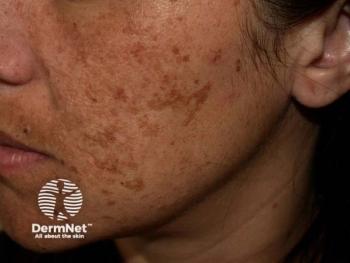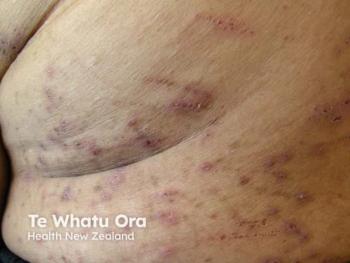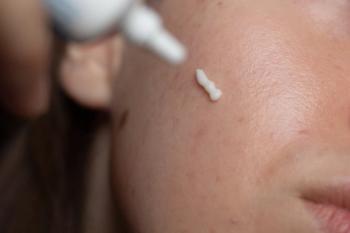
Journal Digest: August 13, 2025
Key Takeaways
- Algorithms for identifying dermatomyositis patients show variability in performance, with some achieving high positive predictive values.
- Australian dermatologists face cybersecurity challenges, with inadequate training and insecure device usage prevalent.
This review of the latest dermatologic studies includes findings on cybersecurity practices in dermatology, compression therapy for cellulitis, melanoma overdiagnosis, and more.
Arthritis Care and Research:
Martin et al. aimed to improve research on dermatomyositis (DM), a rare disease, by developing algorithms to identify adult DM patients across multiple real-world data sources. Researchers created and tested 8 case identification algorithms using the OMOP Common Data Model in 11 electronic health record and claims databases covering over 800 million patients. Algorithm performance was assessed through chart reviews and tools like CohortDiagnostics and PheValuator, which measure metrics such as sensitivity and positive predictive value (PPV). Results showed substantial variability across databases, with sensitivity and PPV differing by more than 30%. However, one incidence and one prevalence algorithm demonstrated strong performance, with PPVs of 83% and 84%, respectively.1
Australasian Journal of Dermatology:
Yoong et al. assessed cybersecurity and data protection practices among Australian dermatologists and trainees via an electronic survey with 108 respondents. While most participants used electronic medical records (EMRs), significant gaps were found in cybersecurity awareness, training, and policy enforcement. Only 11% reported regular staff training in data protection, and nearly 79% had never received cybersecurity training. About half of respondents occasionally used personal smartphones for clinical imaging, often without secure applications. While 84% had remote EMR access, around one-third were unsure whether proper security measures like multi-factor authentication were in place. Shared logins and infrequent password updates were also common. Additionally, use of secure platforms for telehealth varied, with less than half using dedicated, secure systems.2
Journal of Cosmetic Dermatology:
This case report describes significant hair regrowth in a 4-year-old girl with Marie Unna hereditary hypotrichosis (MUHH), a rare congenital hair disorder caused by a recurrent HRURF gene variant. The patient, who had minimal scalp hair since birth, was treated with 5% topical minoxidil once daily. After 12 weeks, notable improvement in hair density and length was observed, with continued progress over 6 months. Treatment discontinuation led to hair breakage and plateaued growth, but regrowth resumed after restarting minoxidil. Genetic testing confirmed a de novo stop-loss HRURF mutation previously identified in other MUHH cases. This is one of the first reports showing the short-term effectiveness of topical minoxidil in MUHH, a condition with no targeted therapies.3
This randomized controlled trial investigated whether early compression therapy improves outcomes in patients with lower leg cellulitis. Thirty-four hospitalized patients were assigned to receive either standard care alone or standard care plus medical adaptive compression wraps (MAK) initiated 24 hours after starting antibiotics. The primary outcome was reduction in C-reactive protein (CRP) levels; secondary outcomes included symptom relief and erythema size. Overall, early compression significantly reduced symptom scores and pain from day 3 onward, with no increase in complications. While no significant CRP difference was observed in the full cohort, a subgroup with baseline CRP >50 mg/dl showed faster CRP decline in the MAK group by day 5. Importantly, no cases of bacteremia or sepsis occurred due to compression.4
Australasian Journal of Dermatology:
This study explores melanoma overdiagnosis from a clinical perspective, emphasizing its complexity and impact on healthcare. Overdiagnosis occurs when melanomas unlikely to cause harm are detected and treated, contributing to increased incidence without reducing mortality. The authors distinguish related terms like overdetection, diagnostic drift, and overcalling, underscoring the population-level nature of overdiagnosis. They highlight the psychological, financial, and systemic burdens, particularly in Australia, where overdiagnosis is high. Key contributors include clinical, pathological, and biological uncertainty, driven by low diagnostic thresholds and fear of missing aggressive disease. Solutions include improving diagnostic accuracy, recalibrating pathological thresholds, and developing reliable biomarkers to differentiate indolent from aggressive melanomas. Emerging technologies like AI, dermoscopy, and confocal microscopy may aid in reducing overdiagnosis, though challenges remain.5
References
- Martin B, Kelly W, Morgan-Cooper H, et al. Identification of Adult Dermatomyositis Patients Using Real-World Data Sources. Arthritis Care Res (Hoboken). Published online August 12, 2025. doi:10.1002/acr.25625
- N. K. M. Yoong, X. L. Wong, and J. Sullivan, “ Cybersecurity and Data Protection Practices Among Australian Dermatologists,” Australasian Journal of Dermatology (2025): 1–7,
https://doi.org/10.1111/ajd.14582 . - C. Cui, X. Chen, Y.-Z. Zhang, J.-Y. Ma, and A.-H. Wei, “ Significant Hair Regrowth With 5% Topical Minoxidil in a Child With Marie Unna Hereditary Hypotrichosis Caused by a Recurrent HRURF Variant,” Journal of Cosmetic Dermatology 24, no. 8 (2025): e70382,
https://doi.org/10.1111/jocd.70382 . - Dräger S, Kiehne C, Zinser G, Kahle B. Treating cellulitis promptly with compression therapy reduces C-reactive protein-levels and symptoms - a randomized-controlled trial. J Dtsch Dermatol Ges. Published online August 11, 2025. doi:10.1111/ddg.15829
- Sheerin J, Collgros H, Chamberlain A, et al. A Clinical Perspective on Melanoma Overdiagnosis. Australas J Dermatol. Published online August 12, 2025. doi:10.1111/ajd.14581
What new studies have you been involved with or authored? Share with us by emailing
Newsletter
Like what you’re reading? Subscribe to Dermatology Times for weekly updates on therapies, innovations, and real-world practice tips.


















